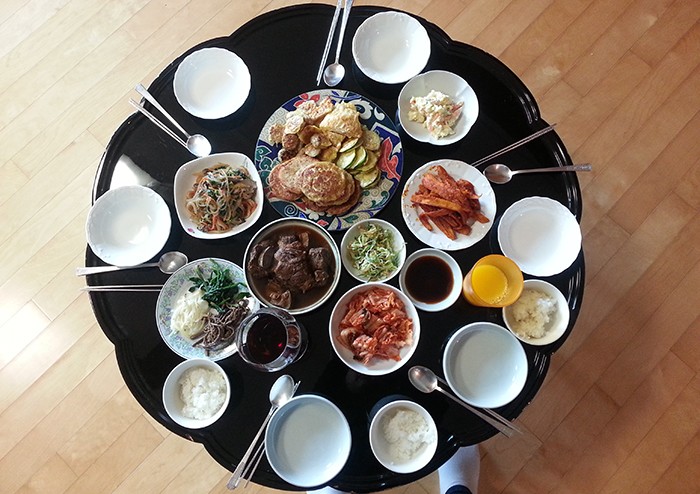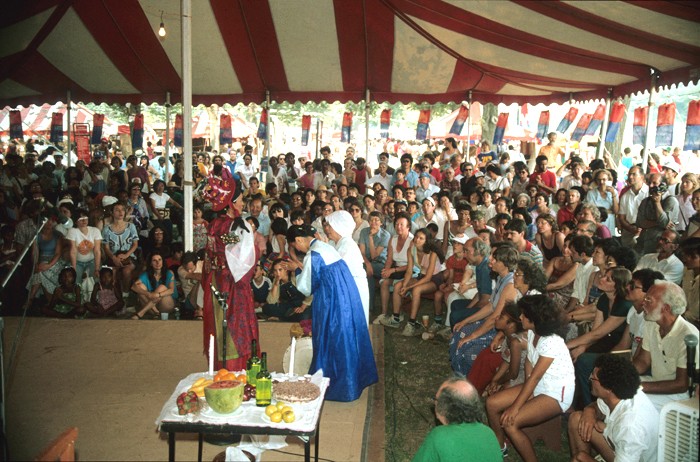Lunar New Year in South Korea

Editor’s note: At the 2014 Folklife Festival, we featured artwork, craft activities, and cooking demonstrations based on Chinese New Year celebrations. The Lunar New Year is observed far beyond China, however; intern Jennifer Suh reports on her family’s celebration of the holiday in South Korea.
As a study-abroad student in Washington, D.C., I have enjoyed learning about American culture and traditions, but I was glad to arrive home before one of my favorite holidays in South Korea: the Lunar New Year. The holiday is called Seollal in Korean and can fall anywhere between January 20 and February 21. This year, Lunar New Year is February 19. Many countries celebrate the holiday including China, Vietnam, Mongolia, Tibet, and Korea.
In South Korea, Seollal is a day to gather with family members. For many who live far away, the holiday may be one of the few opportunities in a year to visit their relatives, but they must plan early to avoid terrible traffic and crowded trains. Train reservation websites often crash as soon as holiday travel schedules are posted from the rush of traffic!
During Seollal, my family always visits my father’s relatives, since Korea has a paternal culture. Under the rule of Confucianism, a married woman was not allowed to visit her family without permission from her parents-in-law. This tradition does not exist anymore, but still it is common to meet paternal relatives first.
Seollal begins with an ancestral rite called charea. The rite starts with preparing foods, including a variety of wild herbs, meat, fish, fruits, alcohol, and the Korean New Year dish tteokguk, a soup made with sliced rice cake.
The food should be placed in order on a ritual table by the law of ancestral rite. The law of ancestral rite has many variations, depending on region and family. But peaches and red beans are never used for this rite, since traditionally they are believed to keep away ghosts. The family members bow down twice and bow once to the table to show respect and gratitude to ancestors. Today, some families in Korea refuse to do ancestral rites because of changing religious beliefs or the difficulty of preparation.
After greeting the ancestors, all family members eat the food. Then the younger generation pays respect to the older generation by bowing down, which we call saebae. Usually the older family members give words of blessing—and money—to the children. This money was one reason Seollal was my favorite holiday! Counting the money I received was always a thrill. After I am considered a “real adult,” I will be expected to give money or presents to older relatives.
Later in the day, our family visits maternal relatives. Unlike paternal relatives, we do not do charea. Here, we only do saebae and eat another delicious meal together.
January 1 is also celebrated in Korea. A “Watch-Night Bell” is rung and people go to the east coast to watch the first sunrise. But Lunar New Year is more of a time to celebrate family. That is why I am so excited to return to South Korea before Seollal to spend the holiday with my family!

You can try making some New Year’s soup with this recipe from my family:
Tteokguk (Korean Rice Cake Soup)
Ingredients
1 lb sliced rice cakes
½ lb beef brisket, chopped
7 cups water
1 tsp black pepper
2 tsp sesame oil
1 tbsp soy sauce
1 chopped spring onion
3 cloves of garlic, minced
Directions
1. Wash the sliced rice cakes with water and place in a colander to drain.
2. Cover the bottom of a pot with sesame oil, and cook the chopped beef, pepper, and soy sauce together until the beef is lightly browned.
3. Once the beef is slightly cooked, add the water to the pot and bring to a boil.
4. When the water begins to boil, add rice cakes, minced garlic, and chopped spring onion.
5. Boil soup for fifteen minutes or until the rice cake is cooked.
Heekyung (Jennifer) Suh is a student at Seoul National University majoring in anthropology. She spent the fall 2014 semester studying at American University in Washington, D.C., and January 2015 serving as an intern at the Center for Folklife and Cultural Heritage.

